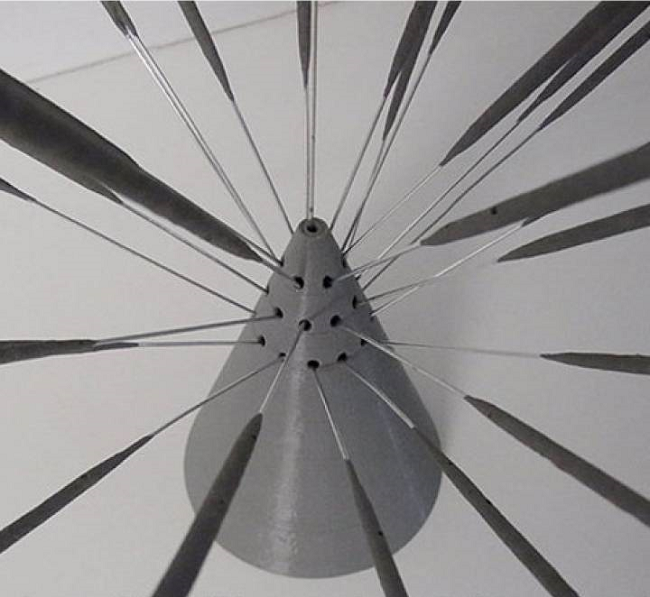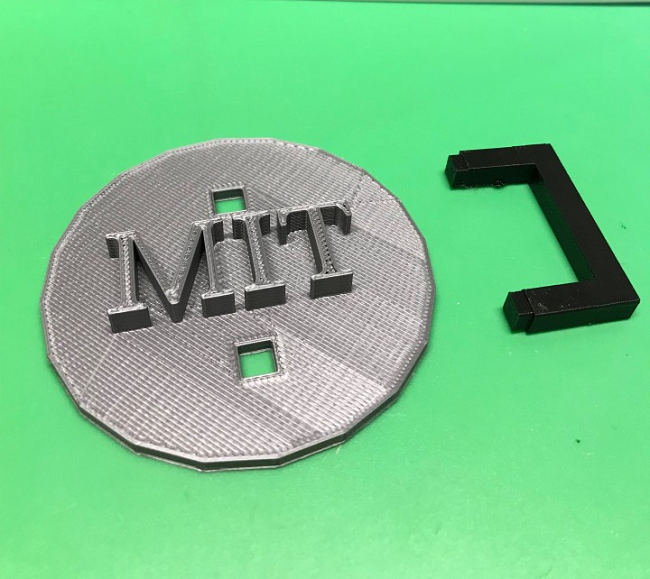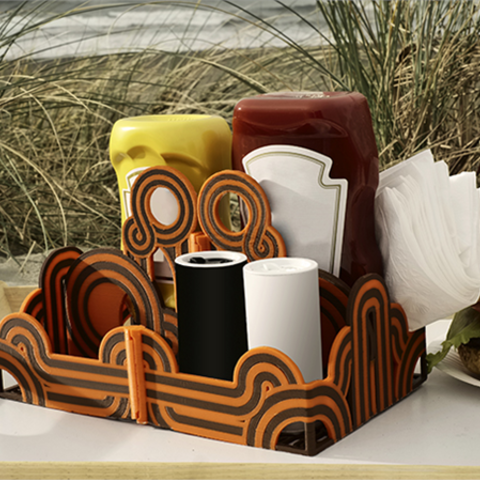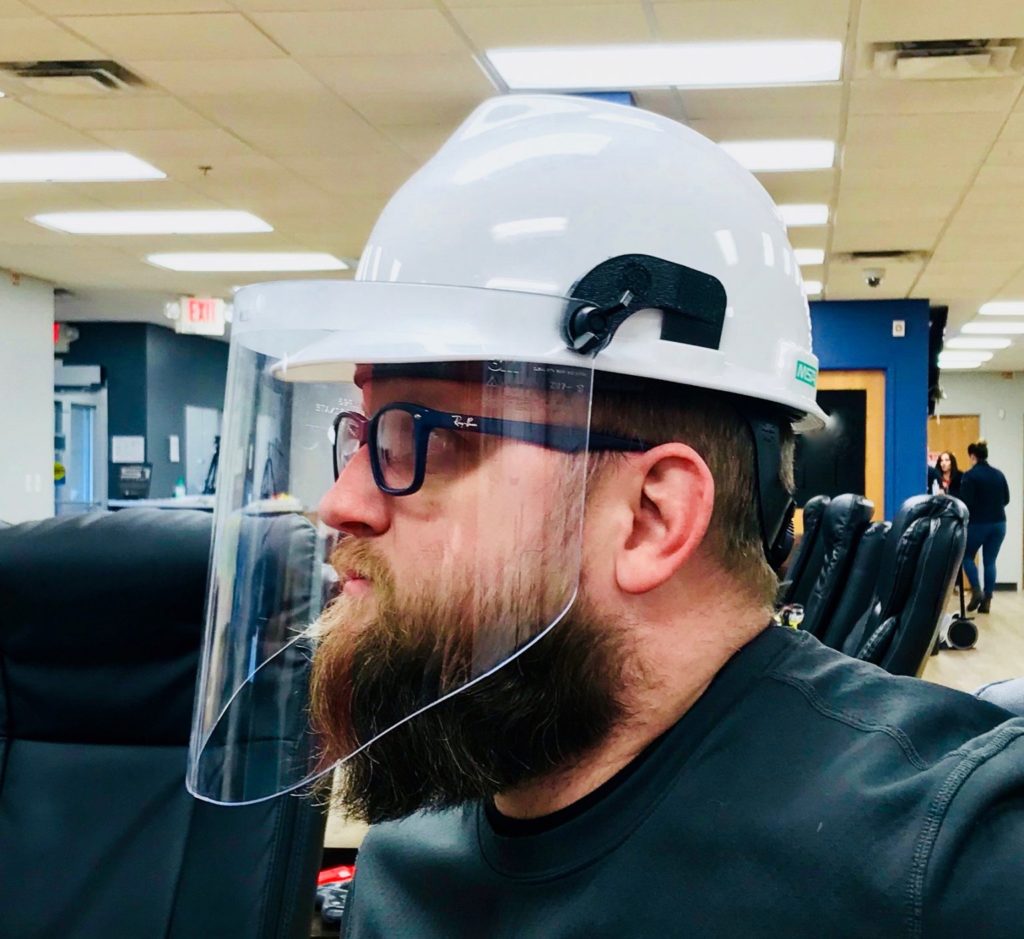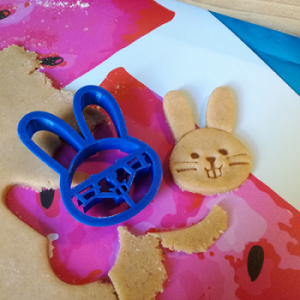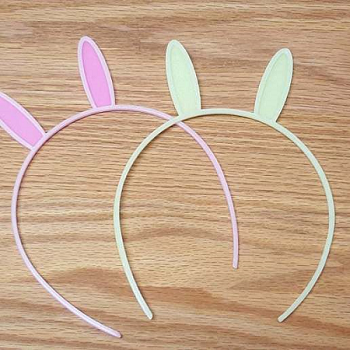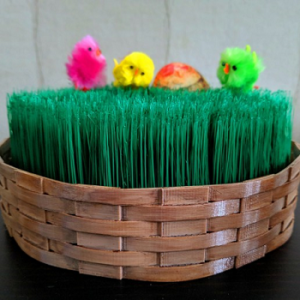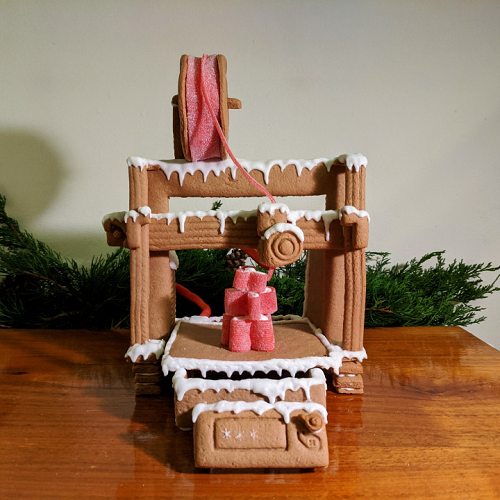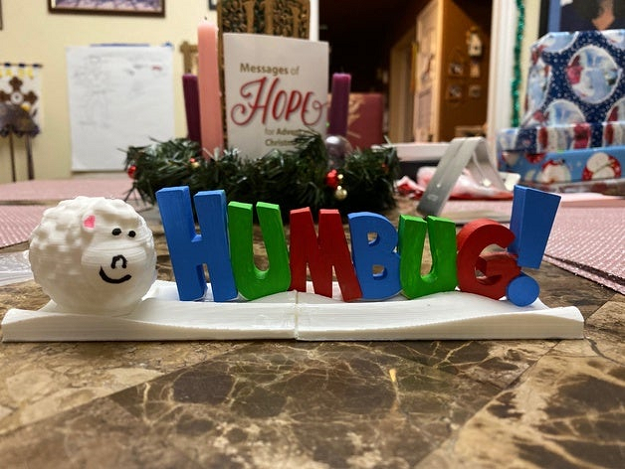New 3D printing jobs at MyMiniFactory, RMT and Link3D, new appointments at Physna, Fehrmann and more
3D Printing for the Fourth of July
Today is the Fourth of July, or Independence Day, here in the U.S. This means most people in the United States will get the chance to enjoy a three-day weekend, and that brings with it the chance for barbecues, camping, fireworks, and more summer fun! Obviously, we thought there was no better way to celebrate this exciting occasion than by 3D printing some holiday-related items, so read on and enjoy.
If you’re heading out to see a fireworks display (obviously wearing your mask and social distancing from others, of course), you’ll want to look your best. So, why not print out and wear this fireworks ring from Cults3D user Lockheart? She writes that if you really like this piece, you can also order it in metal from Shapeways. However, some cities are canceling their July 4th fireworks displays due to COVID-19, and even if the shows are still happening, many people may not feel comfortable being in a big crowd yet. So, you can always print this Fireworks sculpture and make your house or backyard a little more festive.
“Put something heavy in the bottom compartment to have it stand better. Scale as wanted,” Thingiverse user Mizcak wrote. “Printed well in ABS at 0.2mm layers and 0.4mm nozzle. No raft or brim.”
Technically this sculpture was created as a decoration for New Year’s, but I think it works for the Fourth of July just as well.
This 3D Printable Fireworks LED Lamp, posted by MyMiniFactory user Joe Casha, is another great decoration, though it will take more than a 3D printer to make. You’ll need screws, wires, an Arduino Nano, fiber optic cable, and a few other things. Plus, some soldering is required.
If you want to have some low-key fireworks fun in your own backyard, you can also make this awesome Sparkler Holder by MyMiniFactory user Muzz64. This easy print holds 27 sparklers over three levels, which means you can place a whole package in the holder, and you won’t need a lot of filament to make it, either.
“The design features an internal retainer to locate the Sparklers so they stay at a similar angle as others on the same level as well as keeping the hot / burning part well clear of the holder itself so it won’t melt or burn.”
Speaking of fun in the backyard, it’s always fun for kids when the sprinkler gets hooked up for the summer – make their day with this Basic Water Sprinkler by Thingiverse user ICEPICKTONY. While they’re all running around, you can keep cool yourself with this nine-sided Glacier Wine Cooler from MyMiniFactory user 3DRegan.
“This neat wine cooler uses the infill settings in 3D Printing to trap a cold layer of air between the two walls and keep your wine bottle chilled!”
It takes about 16 hours to print this model out of PLA, with 20% infill, no supports, and layer height of 0.3 mm. You can also print it in separate colors if you so choose.
But if you prefer beer over wine, then you’ll definitely need this Bottle Opener and Cap GUN! by Thingiverse user 3Deddy. It’s an easy print, with just a few supports, and you’ll need a set of M3 bolts and an elastic rubber band to get the fun started. The speed at which it shoots is described as “gentle,” though obviously you won’t be shooting it at people…maybe just stand way back and see how close you can get to the grill!
If your grill doesn’t have quite as much space as you’d like for the necessary tools of the trade, you can print this handy BBQ tool holder peg multiplier by MyMiniFactory user Kazys Domkus. It fits on a 200 x 200 mm print bed, and should be scaled by 25.4. If the tool doesn’t fit your particular grill, Inventor files have been included for this print. You could also try this BBQ CLIP-ON HOOK/HANGAR print from Cults 3D user Dantu, who printed this out of PETG material.
Once your grill is set up the way you want, you can get down to the serious business of cooking the meat…and why not have some by customizing your burgers with this Burger Stamp by MyMiniFactory user Jeff Green? He says it only “takes about 10 seconds to change it/create it in Tinkercad,” and another 20 minutes to print out of food-safe PLA.
If you’ve decided to take advantage of the long holiday weekend and go camping, 3D printing can help with this activity as well. You can make this 1L Camping Bottle from Cults 3D user wavelog, or a helpful Folding Tripod Camping Stool Part by Cults 3D user to make your chair away from home more stable.
You can turn a mini flashlight into an ambient light with this Cults 3D Camplamp model by user 3DPrintNovesia. It’s designed with a 12 mm hole, so you’ll just need to scale it to your own flashlight, and print it with a low infill out of transparent filament. But my favorite is this Camp Caddy by fittingly named Cults 3D user TeamOutdoor, because it’s attractive and multifunctional.
“Condiment Holders don’t get any more far out than this. Everybody who BBQs in the outdoors or cooks on a campfire needs this. For one thing, condiments are unwieldy little suckers, and best passed and carried around all at once. And this one is a 3D printed work of art. Also holds a six pack—because of course—and your shower stuff, because why not?”
You can’t argue with that reasoning! It should take about 32 hours to print each half of this caddy out of PLA, and then you simply press the two together “until all of the vertical edges snap together.”
Happy Fourth, and happy 3D printing!
The post 3D Printing for the Fourth of July appeared first on 3DPrint.com | The Voice of 3D Printing / Additive Manufacturing.
Interview: Andrew Ainsworth – the man behind the Original Stormtrooper design
Holiday Fun During COVID-19: 3D Printed Easter Eggs, Seder Plates, and Ramadan Lanterns
Because of the COVID-19 epidemic, this spring is going to be really difficult for a lot of people. On top of cancelled classes, closed restaurants, and people panic-buying at grocery stores, Passover began earlier this week, Easter is this Sunday, and Ramadan starts in two weeks. Many people like to spend time with their loved during holidays like these, and with countries all over the world in various stages of lock down and quarantine, that’s likely not going to happen. The ongoing coronavirus crisis has upended life for a lot of people, and additive manufacturing companies and makers at home have been rushing in to help, to the best of their abilities, by 3D printing things like face shields and masks, nasal swabs, ventilators, field respirators, and even hands-free door openers.
However, while this call to arms is admirable, we need to remember that regulations and certifications for 3D printed medical devices are put in place for a reason. Even the best intentions can lead to some harmful consequences, and we must make sure we’re not causing additional harm by 3D printing items that don’t need to be 3D printed. My suggestion is that maybe, we use 3D printing to take care of our mental health, which is just as important during these strange times. So I refer back to my opening statement – it will be hard not spending the holidays with your family and friends.
So, if you’re stuck at home with a 3D printer, why not make the best of things and create some holiday-themed prints? For instance, just because you’re not expecting a passel of guests doesn’t mean you can’t still decorate with this Easter Egg-shaped holder for electric candles, published by MyMiniFactory user 3dprintinggeek, or this ‘Happy Passover‘ print on Thingiverse, which user jrembrandt created with the Customizer feature.
This Ramadan Moon decoration by Thingiverse user YehiaJammoul can be 3D printed in different sizes, so long as the bed is “perfectly leveled.” I also like this Ramadan lantern print by the same user, who designed it in SOLIDWORKS and printed it on a Creality CR-10S.
A lot of people are getting through these difficult times by stress-eating. So long as you use food-safe filament, help feed your craving with the help of these cute Easter Cookie Cutters by MyMiniFactory user Benjamin_Lau, or this one from aptly named Cults3D user Cookiemonster. Thingiverse user ianwarelec turned to Fusion 360 to design this Ramadan Kareem Cookie Cutter, shaped like a crescent to represent the lunar month of Ramadan. Also on Thingiverse, I found this Matzo Slicer by Shoogon and a Matzo holder by itaysp.
You can celebrate the holidays by dressing up if you want, and these Easter Bunny Earrings by MyMiniFactory user Idea Lab, or this adorable Bunny Ears Head Band, will surely land you on the Easter Bunny’s best-dressed list…if he makes one.
“Don’t forget to cut off the tabs, they are present to act as a strategic brim to help bed adhesion and prevent curling,” Cults3D user bLiTzJoN writes about the head band.
I found this really lovely Vertical Seder Plate on Thingiverse – user stevemedwin’s wife is a rabbi, and challenged him to make the vertical plate.
” I ended up designing a seven piece assembly that holds the traditional seder plate liners. OpenSCAD came to the rescue as the tolerances on the pieces was critical for it to be stable,” he wrote.
“The arms can be rotated independently in order to fit the items as needed.”
He 3D printed the plate on his MakerBot Replicator 2, with no raft or supports, at 10% infill and a layer height of 0.200.
Of course, it wouldn’t be Easter without 3D printed eggs, like these Floral Easter Eggs and Woven Easter Eggs by MyMiniFactory user TechDave204, and I also really like this Resin Easter Egg Collection on MyMiniFactory from user ChrisBobo, “made with Fusion 360 and Meshmixer and printed on an Anycubic Photon.”
If you’re interested in an indoor hunt for your 3D printed Easter eggs, you can hide them in this 3D Printable Grass by Cults3D user Superbeasti, which can be cut to length and should be printed with a raft for better adhesion.
“As with any “hairy” print, these are printed sideways, and then one of the plates is cut free. The parts should be oriented so, that each strand starts printing from the top of the grass and ends on the root (Cura changes this when you rotate the block 180 degrees on the Z axis).This way you get a nice effect, where the grass is thinner on the top, and adheres better to the bottom plate. You can choose, if you want to have a thick bottom plate or the thin one, by simply orienting the parts accordingly and cutting the opposite plate off,” he wrote.
Bringing things full circle, Thingiverse user menzach created this Coronavirus Easter egg, which needs a raft and supports and will require an extra step of gluing the red S-proteins to the rest of the egg. Once you’ve collected all of your 3D printed eggs, you can place them in this Easter Eggs Basket by Cults3D user SE_2018. But maybe leave the coronavirus egg where you found it…we’ve had enough of that, I think.
Happy holiday 3D printing and stay healthy!
Did you create any holiday 3D prints? Let us know at 3DPrintBoard.com or share your thoughts in the Facebook comments below.
The post Holiday Fun During COVID-19: 3D Printed Easter Eggs, Seder Plates, and Ramadan Lanterns appeared first on 3DPrint.com | The Voice of 3D Printing / Additive Manufacturing.
Open source Spaghetti Detective AI software detects failed prints through webcam
3D Printing News Briefs: April 4, 2020
It’s the first 3D Printing News Briefs of the month! To start with, SelfCAD released a new update, and ACEO is hosting a webinar series about 3D printing with silicones, while Objectify Technologies and TAGMA India are hosting a webinar series about AM adoption. Finally, SHINING 3D and Scan the World are using 3D scanners to bring art and culture to people during a time when most can’t leave their homes.
SelfCAD 2.9.2 Release
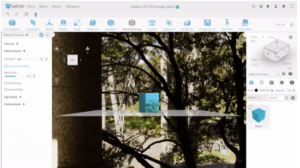 SelfCAD has released its latest software update, SelfCAD 2.9.2, which improves upon existing features and adds new ones to make 3D modeling and printing more efficient. First, there’s a new Environment Map feature in the Settings dropdown menu that lets you add lighting and scenery to your model, and even an environment map. In advanced settings, the new Macro Preview feature lets you see the results of the macros you’ve added without having to finalize your choices.
SelfCAD has released its latest software update, SelfCAD 2.9.2, which improves upon existing features and adds new ones to make 3D modeling and printing more efficient. First, there’s a new Environment Map feature in the Settings dropdown menu that lets you add lighting and scenery to your model, and even an environment map. In advanced settings, the new Macro Preview feature lets you see the results of the macros you’ve added without having to finalize your choices.
You can set a Minimum Step Size for Drawing, Transformation, and Deformation tools, and apply several operations, such as Chamfer, Fillet, Round Object, and Simplify, to Profiles. In addition, SelfCAD has fixed some bugs, and added more settings and options to the Round Object tool. If you have any questions or bugs to report, you can join the SelfCAD Facebook group or email support@selfcad.com.
ACEO Presenting 3D Silicone Printing Webinar Series
 Due to newly implemented health and safety measures during the COVID-19 pandemic, ACEO continues to be operational, but is unable to receive customers right now. So, in an effort to stay connected during these strange times, the company’s team of application specialists, design engineers, and material experts are presenting a series of webinars – in English – all about silicone 3D printing.
Due to newly implemented health and safety measures during the COVID-19 pandemic, ACEO continues to be operational, but is unable to receive customers right now. So, in an effort to stay connected during these strange times, the company’s team of application specialists, design engineers, and material experts are presenting a series of webinars – in English – all about silicone 3D printing.
The first one, “ACEO Basics,” will be held Tuesday, April 7, from 9-9:30 CET, and Wednesday, April 8, from 4-4:30 CET. You can sign up for the webinars here; the event password is jVMGwgX$242. Future topics for the series, with dates not yet announced, are “Real Silicones,” “Design Freedom,” and “ACEO Use Cases.” Please email service@aceo3d.com with your name, company/organization, and country if you’d like to sign up. A modern browser (i.e. not Internet Explorer) is recommended to watch the webinars.
Objectify Technologies and TAGMA India Holding Webinars
 As many people around the world are staying indoors and away from other people during the pandemic, it’s easy to get bored. But, you can spend your time in a productive way, which is why Objectify Technologies and TAGMA India are holding their own 3D printing webinar series together. The series, themed “3D Printing: Prototype to Production,” was created to promote adoption of and spread awareness about additive manufacturing. Webinars will begin on April 6th and go through April 14th, with topics such as Additive Manufacturing/3D Printing 101, Learnings and Misconceptions, and Current Challenges and Demand of the Industry.
As many people around the world are staying indoors and away from other people during the pandemic, it’s easy to get bored. But, you can spend your time in a productive way, which is why Objectify Technologies and TAGMA India are holding their own 3D printing webinar series together. The series, themed “3D Printing: Prototype to Production,” was created to promote adoption of and spread awareness about additive manufacturing. Webinars will begin on April 6th and go through April 14th, with topics such as Additive Manufacturing/3D Printing 101, Learnings and Misconceptions, and Current Challenges and Demand of the Industry.
“To help engineers around the world learn something new in this lockdown time, we have come up with a series of webinars on Additive Manufacturing (AM). The idea behind this webinar is to spread awareness regarding the AM technology and help companies in their journey towards industry 4.0,” said Ankit Sahu, Founder & Director, Objectify Technologies Pvt Ltd. “The objective is to encourage individuals ranging from students, researchers, and industrialist, on 3D Printing and the value it possesses for Industry 4.0.
“I thank Mr. DK Sharma, President TAGMA India and the entire team of TAGMA for their support. During this challenging time, it’s the collective effort that will help us all grow. Let us all do our bit to help the industry in skill development.”
3D Scanning to Build a Museum Without Walls
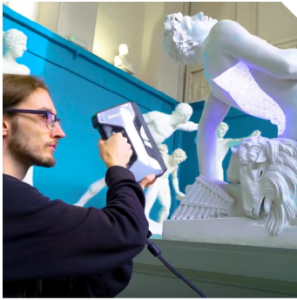 Continuing on in our list of things to do while stuck inside during the coronavirus crisis, SHINING 3D has been working with MyMiniFactoryto to digitize important artifacts for its Scan the World community-built initiative, which archives 3D printable sculptures and other culturally significant objects. Together, they are basically building a 3D museum without walls that anyone can access at any time and from anywhere. Many museums open their data with an open license in 2D, but don’t have the necessary resources to do so in 3D. Scan the World founder and manager Jon Beck is offering museums a free end-to-end service of scanning the sculptures, with the EinScan Pro 2X Plus, before processing the data into 3D models and uploading them to the museum’s Scan the World profile.
Continuing on in our list of things to do while stuck inside during the coronavirus crisis, SHINING 3D has been working with MyMiniFactoryto to digitize important artifacts for its Scan the World community-built initiative, which archives 3D printable sculptures and other culturally significant objects. Together, they are basically building a 3D museum without walls that anyone can access at any time and from anywhere. Many museums open their data with an open license in 2D, but don’t have the necessary resources to do so in 3D. Scan the World founder and manager Jon Beck is offering museums a free end-to-end service of scanning the sculptures, with the EinScan Pro 2X Plus, before processing the data into 3D models and uploading them to the museum’s Scan the World profile.
“The quality is very nice for the price that you pay. Scanning is still quite a high-level-entry technology, but what SHINING 3D has been able to do is to create an accessible affordable product, which still produces very good results for a wide range of industries, for me working with sculptures I haven’t found any issues so far working with marble and plaster sculptures and even bronze sculptures. EinScan has been able to solve all of these problems for me,” Beck said.
“There is so much story behind every single artwork whether it’s an original or it’s a copy which is quite beautiful and so, working with each member of staff in the museum who want to tell a different story about their collection is great.”
Discuss these stories and other 3D printing topics at 3DPrintBoard.com or share your thoughts in the Facebook comments below.
The post 3D Printing News Briefs: April 4, 2020 appeared first on 3DPrint.com | The Voice of 3D Printing / Additive Manufacturing.
3D file marketplace MyMiniFactory releases ‘3DPrinted & Delivered’ service
80 additive manufacturing experts predict the 3D printing trends to watch in 2020
It’s the Most Wonderful Time of the Year…for 3D Printing
Hanukkah, Christmas, Kwanzaa, New Year’s Eve, St. Nicholas’ Day, the Winter Solstice, Festivus…December is filled with holidays for us all to celebrate. And what better way to do so than with 3D printing? But whether you’re hosting a holiday gathering this year, or trying to get ready and leave the house so you can attend one (or five…), we know you’re busy and don’t need another thing to add to your already full plate. So we’ve taken the liberty of gathering up some fun holiday-themed 3D print ideas for you in this article. Obviously, you’ll still need to factor in time to actually print these, but sacrifices must be made somewhere, right? Maybe only bake five batches of cookies instead of ten this year.
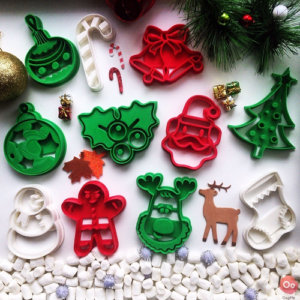 Speaking of cookies, here are some adorable 3D printable Christmas cookie cutters from Oogime on Cults3D – they come in a variety of festive shapes, such as candy canes, stockings, bells, reindeer, mistletoe, snowmen, Christmas trees, and Santa Claus himself.
Speaking of cookies, here are some adorable 3D printable Christmas cookie cutters from Oogime on Cults3D – they come in a variety of festive shapes, such as candy canes, stockings, bells, reindeer, mistletoe, snowmen, Christmas trees, and Santa Claus himself.
“For the baking enthusiast and home cooking aficionado, OogiMe is what you have been looking for. OogiMe digital designs have been tested to fit the requirements necessary for 3D home printing technology.
“We designed unique Cookie Cutters to print that incorporate the holiday spirit, especially for you and your family.”
A couple of the Oogime cookie cutter prints state that with a standard resolution and layer height of 0.3 mm, they shouldn’t take more than an hour to print.
Some people prefer making gingerbread houses to cookie baking, and we found a really awesome holiday 3D printing idea from MyMiniFactory user 3Demon – these are still cookie cutters, but for making a 3D printer out of gingerbread, instead of a house!
“Here’s how you can make a special kind of gingerbread house celebrating one of the best hobbies ever!” the 3Demon group wrote on Instructables.
“I would recommend actually reading the text and not just looking at the pictures so you can avoid some of my mistakes.”
I’ll let you read the rest of the instructions yourself if interested, though I will note that all together, the cookie cutters “should fit on 4 print beds and take about 10 hours of print time” if 3D printed at a layer height of 0.3 mm.
To make your home look merry and bright, you’ll need some good holiday decorations. Thingiverse user amytheengineer suggests this lovely front door wreath, which was 3D printed in four pieces on a JGAurora system. Even though the supports will be “a hassle to remove,” they are necessary for this print.
Thingiverse user deadspool posted this eye-catching Christmas Tree design, which can be 3D printed either as a solid or in vase mode, while Cults3D user Raeunn3D created this cute Snowman, which does not need any supports to print, and Tony Gonzalez on MyMiniFactory designed a 3D printable Spinning Stars Snowflake Ornament, which can be printed in place with no supports.
abbymath on Thingiverse used Mathematica to generate designs for 100 Snowflakes with random parameters, so they are all truly unique. No raft, supports, or infill are required, and the snowflakes were 3D printed at 0.2 mm layer height.
“My code creates all 100 designs, checks each for connectedness, and generates all the STL files in about 13 minutes,” abbymath wrote.
“Included among the individual STL files are five that each contain 20 of the snowflakes arranged to fit on a 200 x 200 mm print bed for quicker setup. Each snowflake has a diameter approximately 40 mm (plus or minus about 5 mm) and a thickness of 0.8 mm.”
 Those who celebrate Hanukkah and are in need of a menorah fast, check out this Vase Mode Menorah by Jacob Surovsky on MyMiniFactory. It takes no more than an hour to print in vase mode, or with Surface Mode set to “Surface” rather than “Normal,” and is also a great mold for a cement craft. But, if you’d rather have a more permanent menorah, you can fill the interior with cement, and once it’s cooled, melt off the thin layer of plastic, which will leave behind a “beautiful and colorful organic texture.”
Those who celebrate Hanukkah and are in need of a menorah fast, check out this Vase Mode Menorah by Jacob Surovsky on MyMiniFactory. It takes no more than an hour to print in vase mode, or with Surface Mode set to “Surface” rather than “Normal,” and is also a great mold for a cement craft. But, if you’d rather have a more permanent menorah, you can fill the interior with cement, and once it’s cooled, melt off the thin layer of plastic, which will leave behind a “beautiful and colorful organic texture.”
“Sometimes Fusion exports the units strangely,” Surovsky wrote. “If the menorah is really small in your slicer, make sure the units are set to inches or scale up by 2540%. Also, make sure to orient the menorah as displayed in the photos.”
I found some other 3D printable menorahs as well – Thingiverse user DavidPhillipOser designed a Customizable Simple Menorah that holds metal cups rather than candles, and Cults3D user hirez posted a lovely design with the Star of David as the base, held up by a pair of hands and adorned with olive leaves, “a symbol of peace that will grow only if we are all chosen to focus on light than in the dark.”
Moving on, it is now time for the Airing of Grievances, or at least it is for the people who choose to celebrate the secular December 23rd holiday of Festivus. Thingiverse user goodBEan posted this design for a Mini Festivus pole, which can fit “a 1/2 inch standard electrical conduit that is cheap, readily available, and made of aluminum so it has a very high strength to weight ratio.” You should use “as many shells as possible” for this print so the top stays intact, and it’s noted that some sanding may be required if the fit is a bit tight.
Finally, if you’re just not feeling that much holiday spirit this year, or you know someone else who isn’t, might I suggest this adorable Baaaa Humbug! design by Thingiverse user keithirma?
We hope you have a joyful holiday season, and that 3D printing makes it even better!
Have you 3D printed anything for the holidays? Let us know at 3DPrintBoard.com or in the Facebook commentsbelow.
The post It’s the Most Wonderful Time of the Year…for 3D Printing appeared first on 3DPrint.com | The Voice of 3D Printing / Additive Manufacturing.


